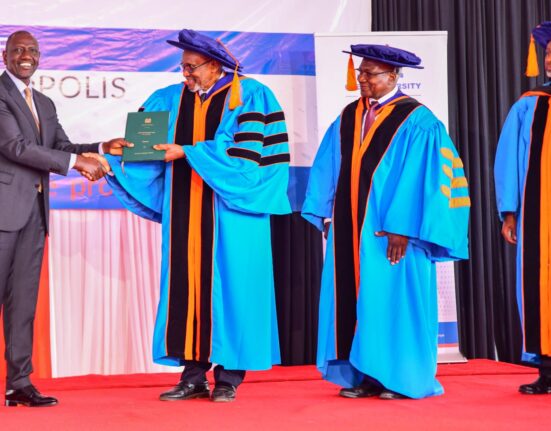The conflict between Russia and Ukraine has been ongoing for several years, with roots dating back to the dissolution of the Soviet Union. This blog aims to provide an in-depth analysis of the current situation, exploring the causes, key events, and potential implications of the ongoing battle. By examining various sources and reports, we will delve into the complexities of the conflict and shed light on the geopolitical implications it holds for the region and the world.
I. Background and Causes
The conflict between Russia and Ukraine has deep historical and geopolitical roots that trace back to the dissolution of the Soviet Union in 1991. As the Soviet Union disbanded, Ukraine emerged as an independent nation with a complex relationship with Russia. Ukraine shares cultural, linguistic, and historical ties with Russia due to their shared history as part of the Soviet Union. These connections have shaped the dynamics between the two countries over the years.
However, tensions between Russia and Ukraine escalated as Ukraine began to seek closer ties with the West, particularly through discussions of potential EU and NATO membership. This shift in Ukraine’s foreign policy direction was perceived by Russia as a direct challenge to its sphere of influence in the region. Russia sought to maintain control over its neighbor, viewing Ukraine’s alignment with the West as a threat to its strategic interests and geopolitical stability.
The annexation of Crimea by Russia in 2014 was a pivotal moment in the conflict. Following the Ukrainian revolution and the ousting of the pro-Russian President Viktor Yanukovych, Russia capitalized on the political turmoil and utilized its military force to annex Crimea. This move was met with international condemnation and sparked a sharp escalation of tensions between Russia and Ukraine. The annexation of Crimea marked a significant turning point, further exacerbating the conflict and triggering a series of events that led to the ongoing battle between the two nations.
The annexation of Crimea not only violated international law but also intensified the divide between Russia and Ukraine. It fueled the aspirations of pro-Russian separatist movements in eastern Ukraine, particularly in regions like Donetsk and Luhansk, where a significant population identified with Russian culture and language. The annexation further deepened the sense of mistrust and hostility between Russia and Ukraine, leading to armed clashes and the emergence of a full-blown conflict in eastern Ukraine.
The conflict between Russia and Ukraine is not solely driven by recent events but rather shaped by a complex web of historical, cultural, and geopolitical factors. Understanding these roots is crucial for comprehending the underlying tensions and motivations driving the ongoing battle between the two nations.
II. Timeline of Key Events
A. Annexation of Crimea (2014)
In 2014, Russian forces occupied Crimea, a region in Ukraine with a significant Russian-speaking population. The annexation followed a controversial referendum that was widely criticized for lacking legitimacy. Despite international condemnation and protests from Ukraine, Russia proceeded with the annexation. The move was met with swift condemnation from the international community, leading to sanctions against Russia by the United States, the European Union, and other countries.

B. Conflict in Eastern Ukraine
Following the annexation of Crimea, pro-Russian separatist movements emerged in eastern regions of Ukraine, primarily Donetsk and Luhansk. These regions had a sizable population with historical ties to Russia, leading to grievances and calls for autonomy. Armed clashes between Ukrainian forces and separatist groups escalated, leading to a full-blown conflict. Ceasefire agreements were signed, such as the Minsk agreements in 2014 and 2015, but they were frequently violated, resulting in sporadic outbreaks of violence.
C. Current Escalation (2022-2023)
Since 2022, there has been a significant increase in military buildup by Russia along the Ukraine border, raising concerns about a potential large-scale invasion. The deployment of troops, heavy weaponry, and increased military exercises have heightened tensions in the region. Diplomatic efforts and negotiations have been ongoing, with various countries and international organizations attempting to mediate the conflict. However, violence has resurged in the Donbas region, intensifying the humanitarian crisis and displacing thousands of people.
III. Humanitarian Crisis and Displacement
The conflict between Russia and Ukraine has had devastating humanitarian consequences. Civilians have suffered high casualties, and infrastructure has been severely damaged. The ongoing violence has led to the displacement of thousands of people within Ukraine and across its borders, creating a pressing need for humanitarian aid and assistance. Displaced individuals face challenges in accessing basic necessities such as food, shelter, and medical care. Providing support to affected communities has been challenging due to the volatile security situation and limited resources.
IV. Geopolitical Implications
The conflict between Russia and Ukraine carries significant geopolitical implications for the region and the world. The tensions between Russia and NATO have escalated, with NATO expressing support for Ukraine and increasing its military presence in Eastern Europe as a deterrent to Russian aggression. The conflict has also fueled concerns about energy security, as Ukraine serves as a crucial transit route for Russian gas to Europe. The disruption of energy supplies could impact the stability of the European energy market. Furthermore, the conflict has taken on a proxy dimension, with various external actors supporting either side, adding complexity to the situation and increasing the risk of regional destabilization.
V. International Response
The international community has responded to the conflict by imposing sanctions on Russia. The United States, the European Union, and other countries have targeted key individuals, entities, and sectors in Russia to exert pressure and encourage a peaceful resolution. Diplomatic efforts have been ongoing, with negotiations taking place through various channels, including the Normandy Format and the Trilateral Contact Group. International organizations, such as the United Nations and the Organization for Security and Cooperation in Europe (OSCE), have played roles in monitoring the situation and facilitating dialogue between the parties involved.
Conclusion
The ongoing battle between Russia and Ukraine continues to have far-reaching implications, both regionally and globally. As the conflict evolves, it is crucial for the international community to remain engaged and find diplomatic solutions to de-escalate tensions. The humanitarian crisis and displacement of civilians demand urgent attention and robust efforts to provide aid and assistance. By understanding the complexities of this conflict and its geopolitical implications, we can work towards a peaceful resolution and strive for stability in the region.
References
- Wilson, A. (2021). Ukraine conflict at a glance. BBC News.
- Kramer, A. (2022). The Ukraine Crisis: What to Know. Council on Foreign Relations.
- Kuzio, T. (2021). Ukraine: Conflict, Reform, and Geopolitics. Carnegie Endowment for International Peace.
- International Crisis Group. (2022). Ukraine: Avoiding Escalation. Retrieved from [link]
- Human Rights Watch. (2023). Ukraine/Russia: Ongoing Abuses in Eastern Ukraine.















Leave feedback about this